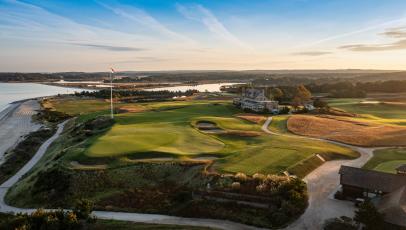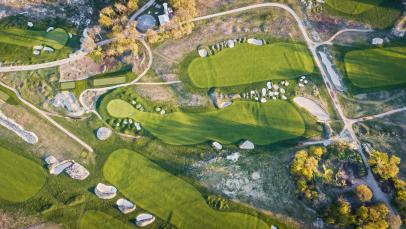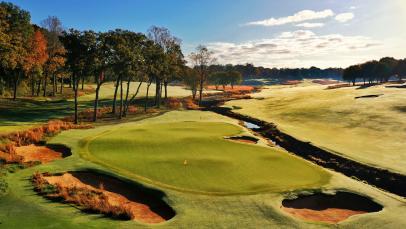New Ranking
America's Second 100 Greatest Golf Courses
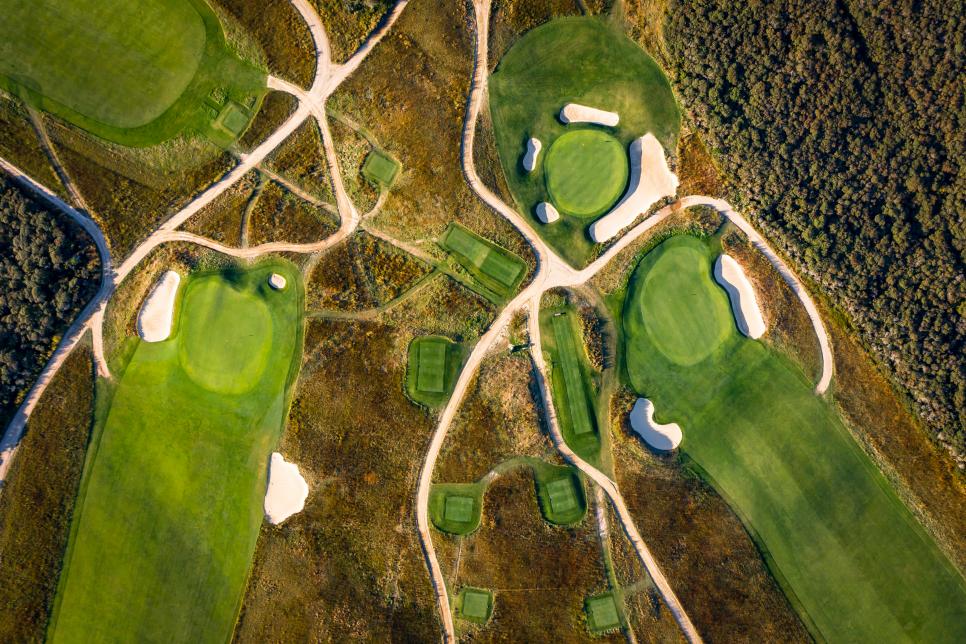
There is simply too much great golf in the United States to recognize only 100 venues, so Golf Digest first launched its Second 100 Greatest Golf Courses ranking to accompany its trademark America’s 100 Greatest Golf Courses list. The results have been just as competitive for the Second 100—in this year’s edition, two courses, Forest Dunes Golf Club in Roscommon, Mich., and The Bridge in Sag Harbor, N.Y., both came less than a hundredth of a decimal point away from earning a spot in the coveted top 200.
The differences are finite throughout the ranking. No. 101 on this ranking, Crooked Stick Golf Club in Carmel, Ind., came two hundredths of a decimal point from topping No. 100 Spring Hill Golf Club in Wayzata, Minn. Yeamans Hall in Charleston, S.C., a Golden Age gem, is widely regarded as one of the best Seth Raynor courses anywhere after renovation work over the past few decades by Tom Doak and Jim Urbina—but even it has fallen out of our 100 Greatest for the first time in 10 years.
These are all great courses—and will likely be contending for a spot on our America’s 100 Greatest ranking for years to come.
Scroll down for the entirety of our America’s Second 100 Greatest courses list—and be sure to click through to each individual course page for bonus photography, reviews from our course panelists—and leave your own ratings on the courses you’ve played … so you can make your case for why a course should be higher or lower on your rankings.
(Parentheses indicate the course's previous ranking.)
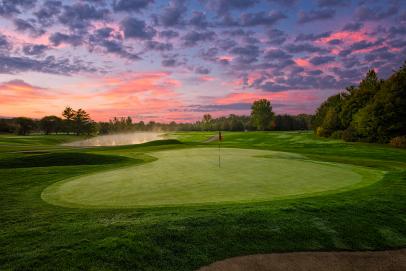
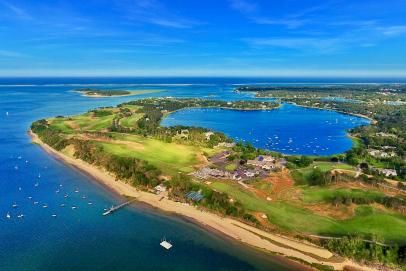

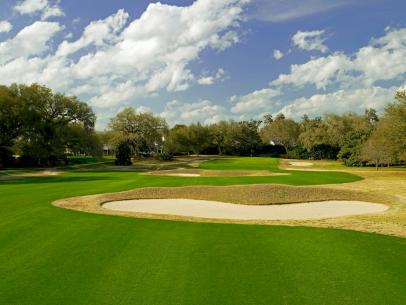
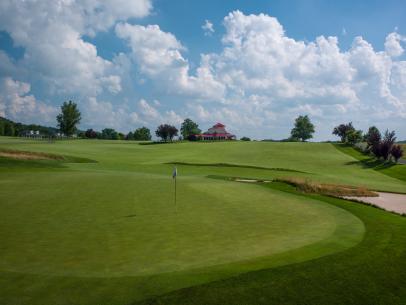
 -- 14th hole - Larry Lambrecht.jpg.rend.hgtvcom.406.229.suffix/1573162562511.jpeg)
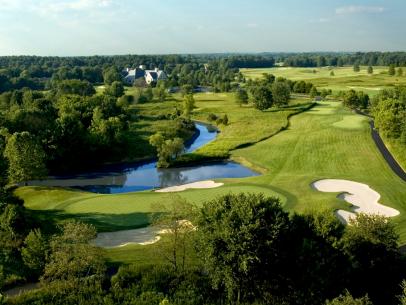

 - 15th hole - Larry Lambrecht.jpg.rend.hgtvcom.406.271.suffix/1573162582732.jpeg)
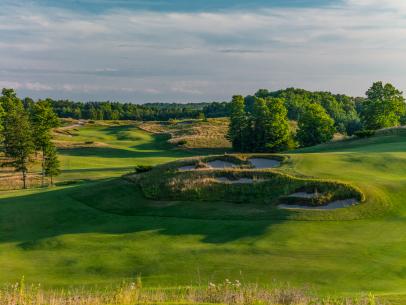


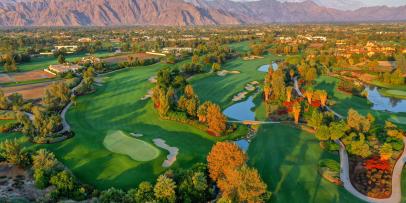
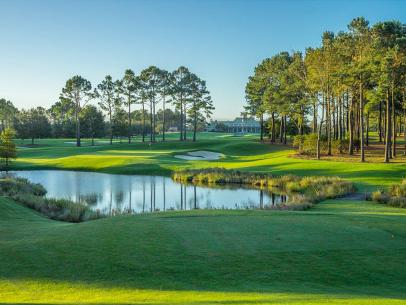
From Golf Digest Architecture Editor emeritus Ron Whitten: I played Eagle Point Golf Club, a Tom Fazio design, soon after it became ranked on Golf Digest's 100 Greatest but before it hosted the 2017 Wells Fargo Championship as a one-time substitute for Quail Hollow Club, which hosted the PGA Championship that summer. I walked it with caddies, Director of Golf Billy Anderson and one of the club's founders (and later president) Bobby Long (who was also green chairman at Seminole and a member of Augusta National.) Just before we teed off, golf architect Andrew Green came over and introduced himself. We'd never met. He was designing a short-game facility for the club. Though it may seem strange that Fazio's firm wasn’t retained to do that, it helps to know that Andrew’s brother, Sam, was Eagle Point’s course superintendent at the time.
Read the complete review, plus comments from our panelists, here.
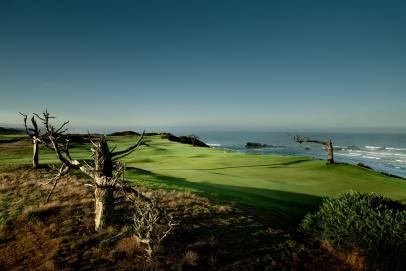
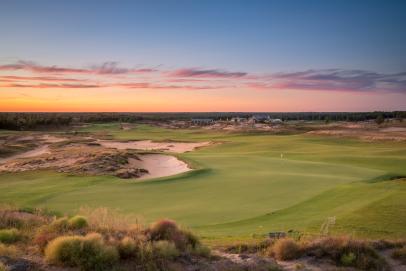
116. (112) Sand Valley
Nekoosa, WI
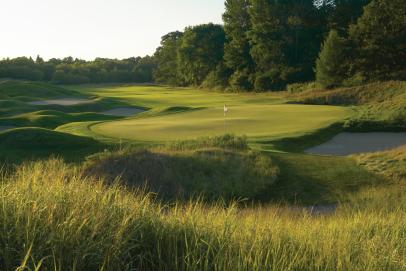
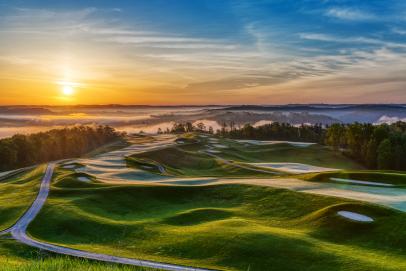
.jpg.rend.hgtvcom.406.271.suffix/1573162575006.jpeg)

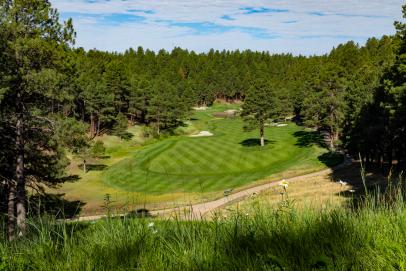


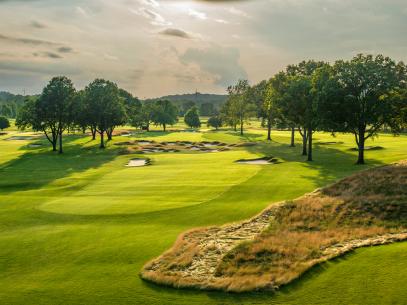
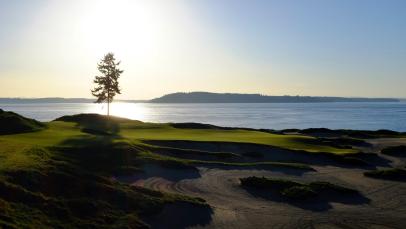

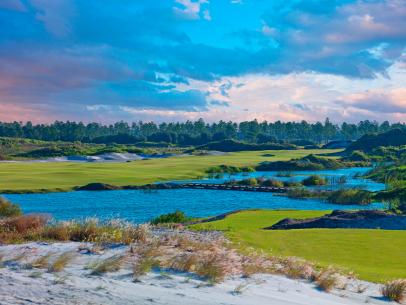
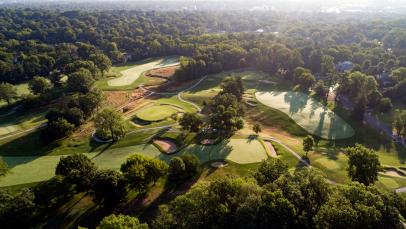
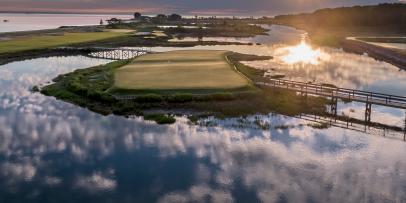
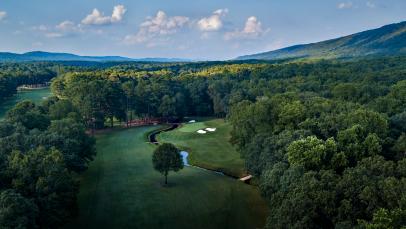
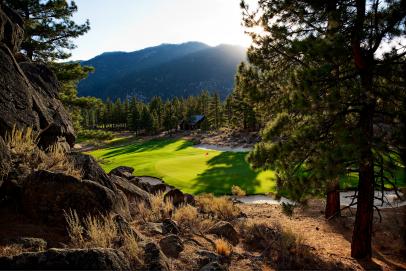
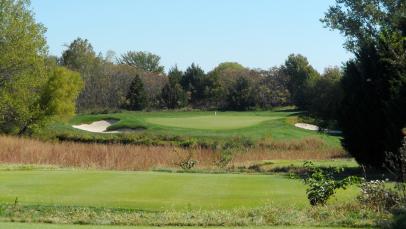
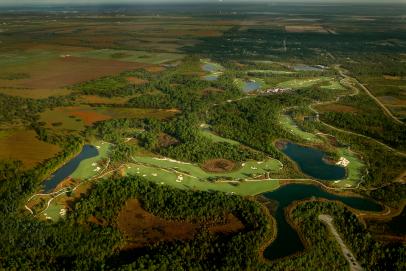
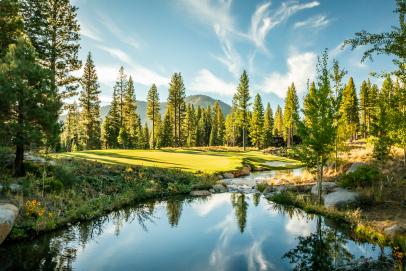
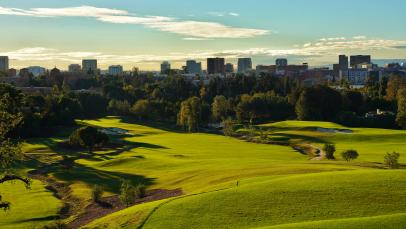

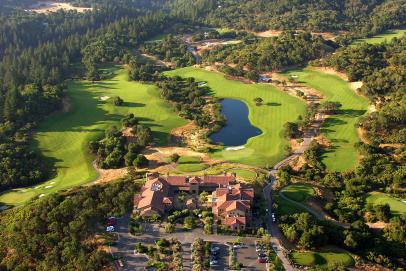
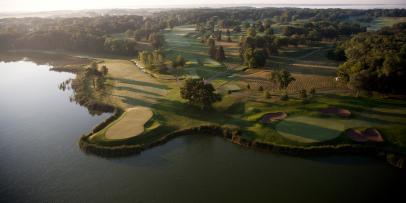
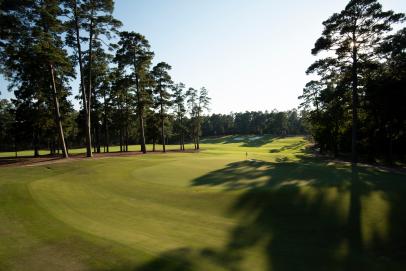
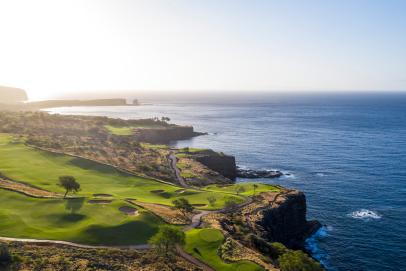
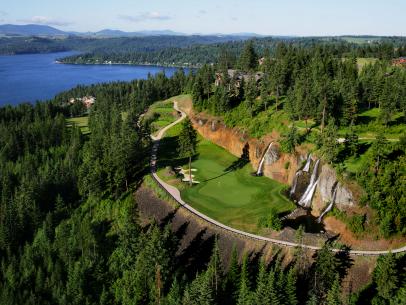
Jim Engh’s architecture is all about turning fantasies into realities, and Black Rock delivers on that goal like few others, with some bobsled-run fairways (where one can putt from landing area downhill to the green), rollicking putting surfaces framed by squiggly bunkers and a par-4 11th pinched by towering rock formations that bring to mind a pinball machine. Unusual and controversial (it won Best New Private in 2003 ahead of No. 15 Friar’s Head and No. 83 Dallas National), Black Rock is a thrilling round of golf.
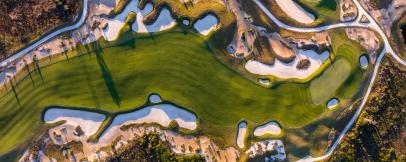
The Dye Course at White Oak, our 2022 Best New Private Course winner, is one of the most exclusive golf courses to be built in recent memory. It’s located on the border of Florida and Georgia outside Jacksonville, in almost complete natural isolation. It has no members, no on-site clubhouse (or any other structures on or near the course), and hardly anyone has played it except for personal invitees of owner Mark Walter and several dozen Golf Digest panelists, who visited between October 2021 and September 2022. Walter engaged the late Pete Dye to design the course in 2013, but by the time construction began in 2017, Dye’s health had deteriorated, and he was no longer able to be active in building it. The job of finishing White Oak fell to longtime confidant and veteran course builder Allan MacCurrach, who interpreted Dye’s wishes based on extensive discussions from previous years and his own wealth of experience working with Dye on over 20 projects. Intensely private and almost entirely off the radar until now, this exclusive video tour captured by photographer Brian Oar offers the first public looks at The Dye Course at White Oak.
 - 12th hole - courtesy of the club.jpg.rend.hgtvcom.406.203.suffix/1573162816013.jpeg)
Whisper Rock’s Upper Course was intended, as the club’s second 18, to specifically test its low-handicap and PGA Tour pro membership, but Tom Fazio couldn’t resist being a crowd-pleaser, so although he designed 18 holes with demanding angles to diagonal fairways from the back tees, his landing areas for average golfers are generous and most greens are cradled with ample chipping areas. All players enjoy the scenic beauty of this patch of Sonoran Desert, with the front nine holes framed by dry washes and a four-hole stretch on the back woven through astonishing towers of balanced granite boulders. “That’s a beautiful, beautiful stretch, going up into those boulders and back down towards Pinnacle Peak,” said Fazio at the grand opening. “But I’m proud of the entire course, as it’s got a whole bag of different looks.” Whisper Rock’s other 18, the older Lower Course, is ranked No. 174.
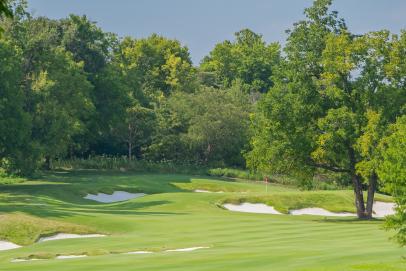

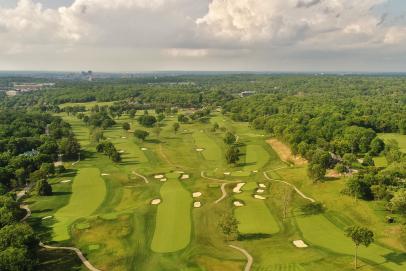
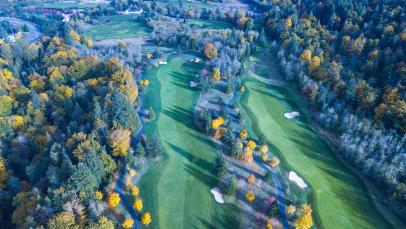
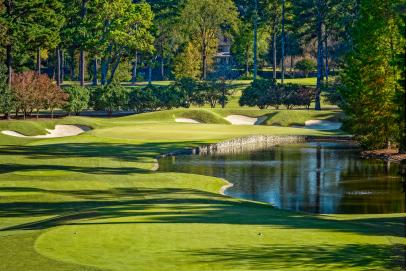

From Golf Digest Architecture Editor emeritus Ron Whitten:
Most golf fans are familiar with Kapalua Golf Club’s Plantation Course, home of the PGA Tour's opening event each year. Located on the north shore of the Hawaiian island of Maui, the Plantation was built from open, windswept pineapple fields on the pronounced slope of a volcano and is irrigated by sprinklers pressured solely by gravity.
As the first design collaboration by Bill Coore and Ben Crenshaw, it unveiled their joint admiration for old-style courses. The blind drive on the fourth, the cut-the-corner drives on the fifth and sixth are all based on tee shots found at National Golf Links. So, too, are its punchbowl green and strings of diagonal bunkers.
It's also a massive course, built on a huge scale, Coore says, to accommodate the wind and the slope and the fact that it gets mostly resort play.
So it's a big course. But what sets it apart in my mind are the little things. When I played the course years ago with Coore, it took only one hole for me to appreciate one of its subtleties. We were on the tee of the par-3 second, an OK hole but nothing riveting, nothing like the canyon-carry par-3 eighth or the ocean-backdropped par-3 11th. The second sits on a rare flat portion of the property. The green sits at a diagonal, angling left to right, and there's a string of bunkers staggering up the right side of the green. The first bunker appears to be directly in front of the green but is actually 40 yards short of it. When pointed out to me, I called it Gingerbread. Bill disagreed.
Explore our complete review here—including bonus photography and ratings from our expert panelists.
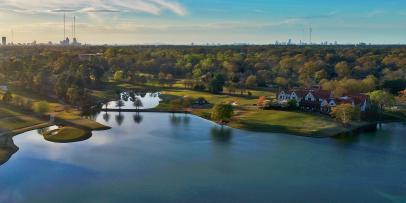
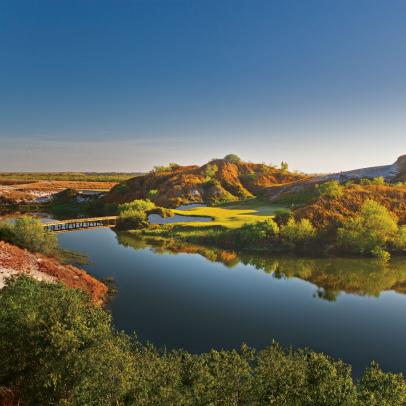
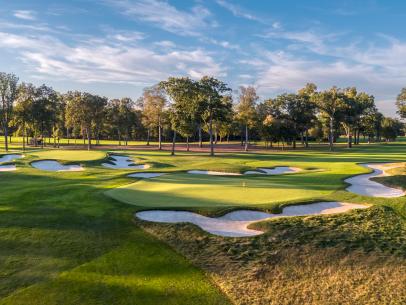
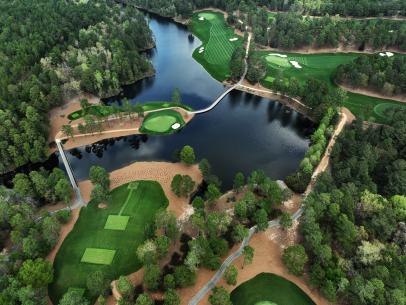
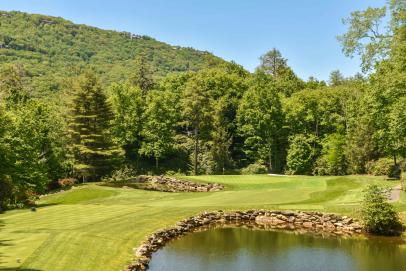
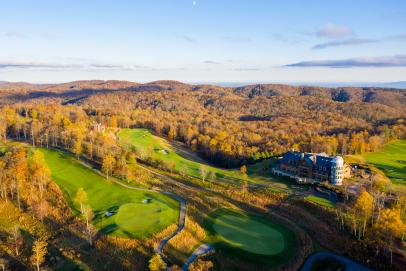
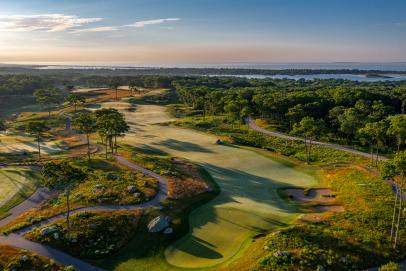
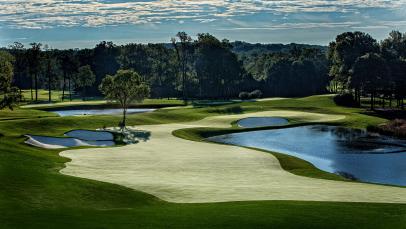

158. (152) Mammoth Dunes
Nekoosa, WI
David Kidd began building a second 18 at Wisconsin’s Sand Valley Resort just before Coore and Crenshaw had completed their 18, which would be named Golf Digest’s Best New Course of 2017. Kidd was intent on topping their work, so he gave his meandering layout enormous fairways, big accessible greens and visually-unique hillsides of exposed sand, “mammoth dunes” that became the course moniker. “This could be the best course I and my team have yet created,” Kidd wrote in late 2017. “We can’t wait for the critics to decide if they agree.” They were disappointed with results of Golf Digest’s 2018 Best New Course survey, which placed Mammoth Dunes second behind Streamsong (Black). But balloting for Golf Digest’s 100 Greatest continued for an additional month after the close of Best New, and additional evaluations pushed Mammoth Dunes ahead of Streamsong (Black), which is now ranked No. 178.
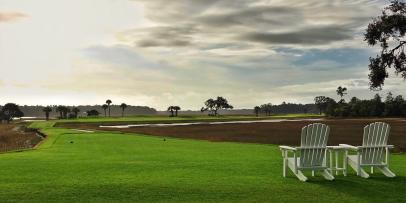
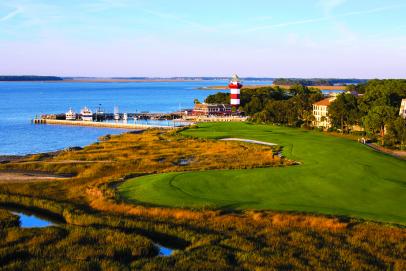

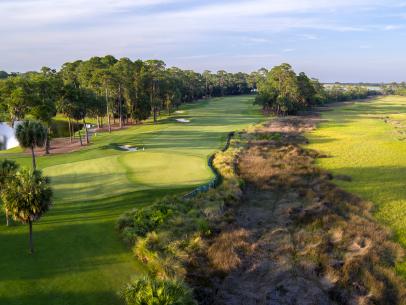
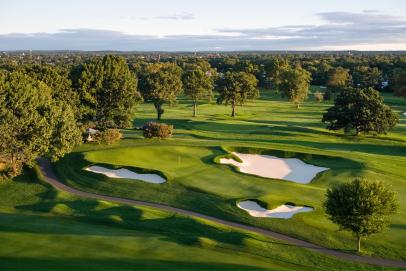
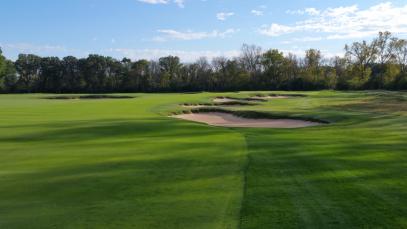
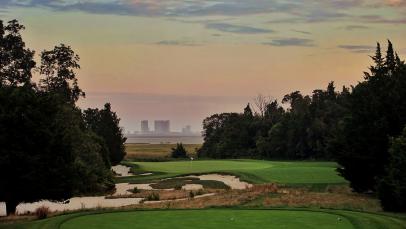
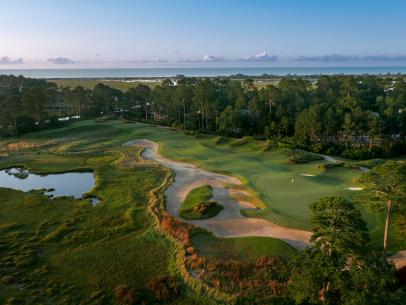
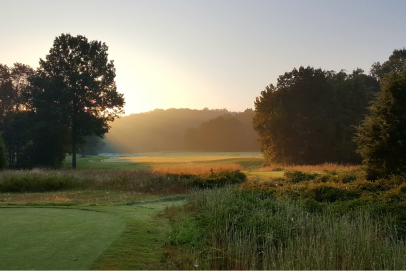
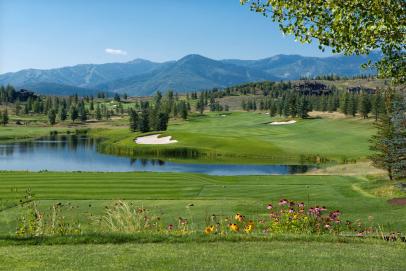
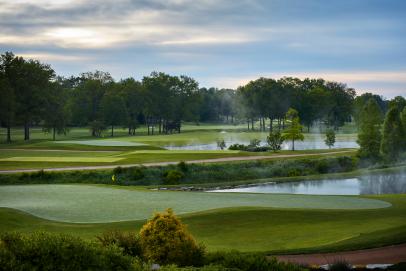
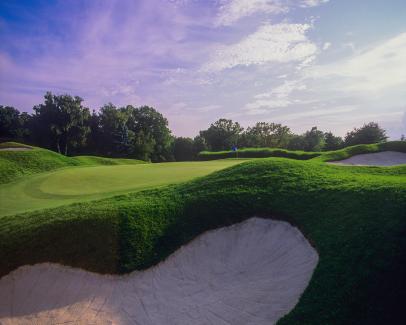
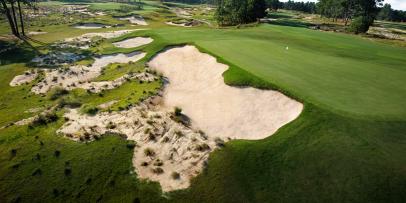
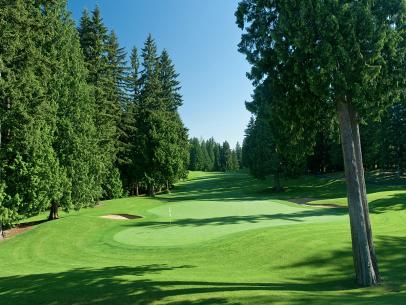
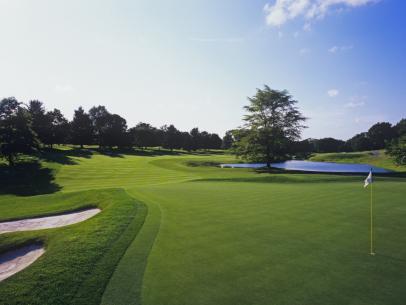
 - 10th hole - courtesy of the club.jpg.rend.hgtvcom.406.162.suffix/1573162852906.jpeg)
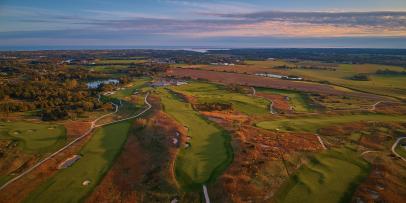
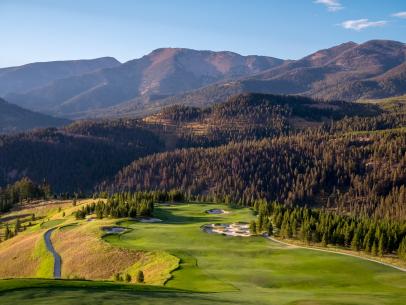
The Reserve at Moonlight Basin is just the third course from Montana to appear in the national rankings, joining Tom Doak’s Rock Creek Cattle Company (No. 56) and Robert Trent Jones’ Yellowstone C.C., which surfaced in the 1960s on the list of America’s “Toughest” courses. Located near Big Sky at an elevation of 7,500 feet above sea level, the Jack Nicklaus design is the highest (in altitude) in the rankings. Big sky is apt—the course was built on the site of an old ski mountain with 360-degree panoramas of the surrounding Rockies, and the impressively large holes race, slalom and dive across circuits of terrain that twist different directions through the wilderness. With numerous downhill shots through the thin air, the championship yardage of 8,000 yards doesn’t seem egregious, and scoring well actually requires a high degree control in judging where the ball will carry and settle. The epic vistas of holes like the par 4 first and par 5 17th (at over 700 yards) are sights to behold, for golfers and non-golfers alike.
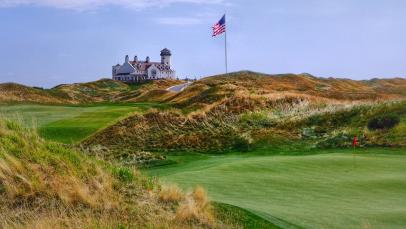
Both Bayonne Golf Club and its neighbor, No. 194 Liberty National G.C., were built at the same time, part of a massive transformation of the Jersey shoreline along the Hudson River and New York Harbor. Bayonne was built on an old sanitary landfill covered with 7 million cubic yards of fill, much of it dredged from the harbor to efforts to make the harbor deep enough for supertankers. The deposits were piled up to 10 stories high, which developer-designer Eric Bergstol then shaped into towering faux sand dunes. The course is an ode to Irish links, with no trees, cart paths or level lies. Fairways flow down narrow valleys, edged by steep slopes laden with tall, wavy fescues. Bunkers are deep and often fearsome. A few greens sit right above the harbor and all putting surfaces have confounding humps, bumps and rolls. Tucked away down a bumpy, unpaved road past a strip mall in blue-collar Bayonne, N.J. is this private, walking-only enclave.
.jpg.rend.hgtvcom.406.229.suffix/1644519945505.jpeg)
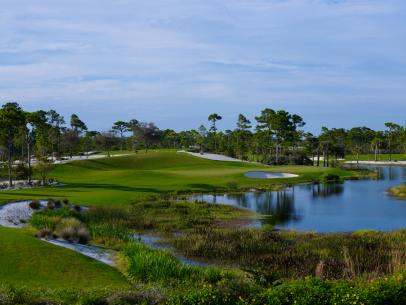
If there’s such a thing as an undiscovered Tom Fazio design, it’s McArthur Golf Club, a players-only layout he did in conjunction with PGA Tour star Nick Price. It’s little-known because of its neighbors, No. 109 Jupiter Hills, a few miles south, Hobe Sound G.C., one of Joe Lee’s finest, just a few miles closer, and Greg Norman’s Medalist right next door. McArthur sits astride the same sand ridge upon which Jupiter Hills and Medalist were built, and while Fazio had to deal with wetlands and easements in his routing, he framed each hole with acres of exposed white sand in the form of dunes, slopes and hollows to provide McArthur with a singularly stunning look that’s unlike any of its rivals. With those wide expanses of sand, McArthur started a trend that continues today.

From Golf Digest Architecture Editor emeritus Ron Whitten:
The Bear’s Club marked a transition point in Jack Nicklaus’ design outlook when it opened in 1999. His architecture had typically been analytical and, while still lovely, oriented toward factoring how players might break down the features tactically. That strategic backbone is present in The Bear’s Club, but the team approached the design more holistically than they had previously, factoring in aesthetics to an unprecedented degree. Instead of building holes on a golf site, Jack and his associates created a golf environment, expanding and enhancing a dune ridge running through the low pine and palmetto scrub and anchoring large, sensuous bunkers into the native vegetation.
The course is part of an upscale residential development near the Intracoastal Waterway, but it blends so well you wouldn’t know it. The change in perspective that Nicklaus Design developed at The Bear’s Club pushed the firm toward similar successes in the 2000s like Sebonack (with Tom Doak), The Concession and Mayacama.

Medalist is a long, demanding course that can stretch out to roughly 7,600 yards, a necessary requirement when the membership includes Tiger Woods, Dustin Johnson, Rory McIlroy, Brooks Koepka and many more of the world’s top professional players. They like The Medalist for the relaxed atmosphere and local convenience, but also because it’s a demanding driving course—the holes circle through an undeveloped sanctuary of wetlands and low scrub vegetation one parcel south of McArthur (No. 179) and are buffeted by the strong Atlantic crosswinds from every direction. Pete Dye designed Medalist with co-founder Greg Norman (this was one of Norman’s first U.S. designs) and the course features Dye’s S-shaped holes curling around sand buffers, slinky ground contour, and small, low-profile greens that bleed into short-grass surrounds. The course had undergone numerous modifications and formalizations in the late 1990s and early 2000s, but Bobby Weed reclaimed much of original Dye character during a 2015 renovation.
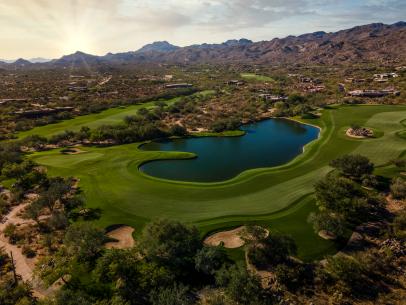
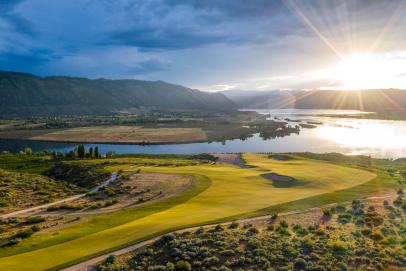
The winner of Golf Digest’s Best New Course of 2014 award, Gamble Sands sits atop a sprawling, treeless plateau of sandy desert overlooking Washington’s Columbia River Valley. The extremely playable layout is oversized in every respect, with enormously wide fairways, gigantic greens, no rough and some of the most panoramic vistas around. In using “friendly contours” that divert shots away from bunkers and toward targets, designer David Kidd wants everybody to have fun. He hopes good players will relish opportunities to score low and high handicappers will post their best round ever. With three reachable par 4s on the 18, that’s a possibility. Of course, Gamble Sands was Kidd’s inspiration for his No. 158 Mammoth Dunes.
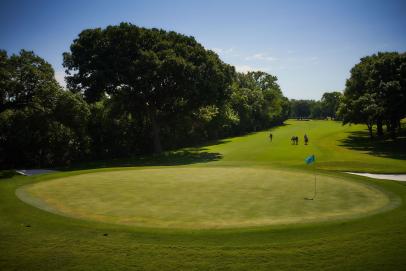
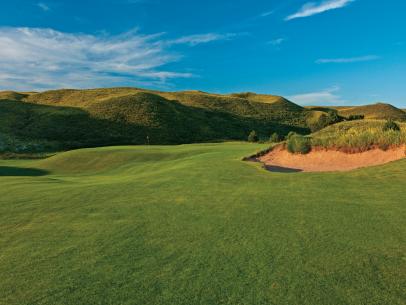
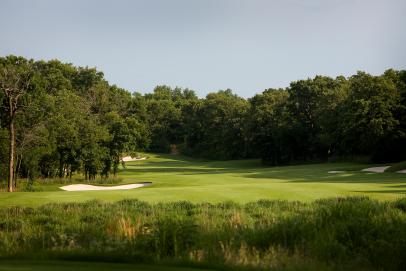
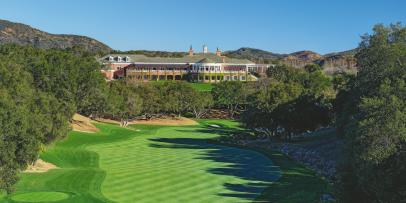

Long Cove was originally routed by Frank Duane and his then-partner Arnold Palmer in the early 1970s. Then Pete Dye was offered the job, but turned it down in order to concentrate on construction of No. 41 TPC Sawgrass. Once TPC was finished, Dye was persuaded to build Long Cove. Having previously done No. 160 Harbour Town just down the road, Dye wanted to do something different, so he installed knobs and mounds and framing berms, shaped some remarkably large greens and built two holes skirting the Colleton River. His construction crew contained half a dozen youngsters who would ultimately became golf architects, including construction supervisor Bobby Weed, Tom Doak, David Savic, Ron Farris, Scott Pool and Pete’s younger son, P.B. In 2018, Weed, author of No. 105 Olde Farm, was picked to restore Pete’s original design, which had grown shaggy around the edges. Now golfers can again run the ball onto 16 of the 18 greens.

Tradition Golf Club was intended to be Palmer Course Design’s answer to the most opulent private courses in greater Palm Springs, such as No. 91 The Quarry at La Quinta and Vintage Club (Mountain). Built on the old Hacienda del Gato Ranch, the front nine is routed over rolling desert and through a flood-control basin, while most of the back nine is tucked at the base of the rocky slopes of the Santa Rosa Mountains, with three holes (15th through 17th) curving around a 90-degree bend dubbed the “Coyote Canyon.” Almost every hole here has a distinguishing feature, from desert wash to serpentine waste bunker to double fairway to boulder landscaping to cascading waterfalls. The common overall theme are fields of wildflowers spread throughout the far roughs. During a 2005 Golf Digest Panelist Summit, Arnold Palmer explained he had those flowers planted to appeal to his first wife, Winnie, who loved flora much more than golf.
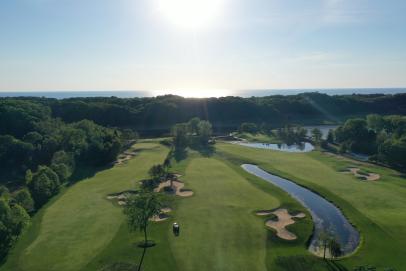
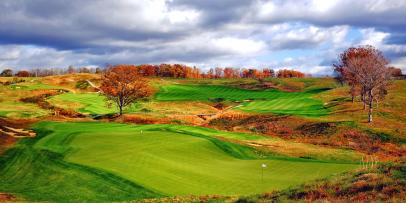
After architect Lester George completed his design of No. 74 Kinloch, with its dual fairways, optional routes and triple-fairway ninth, he relished the opportunity to do it again on a site that might give him even more flexibility. He got that chance in hills outside Roanoke, and his Ballyhack design is Kinloch on steroids, with vast landing areas, joined fairways, center bunkers, double greens and a plethora of choices off the tees and into the greens. Call Ballyhack a pluperfect blend of challenging shots, rugged terrain and nasty native roughs, The Ballybunion of southern Virginia.
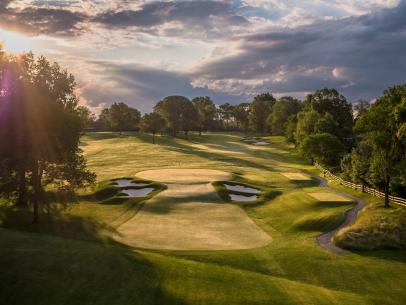
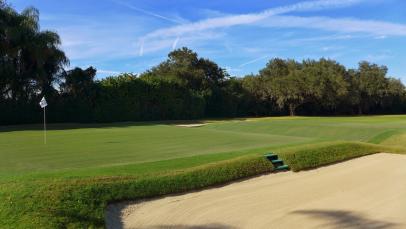
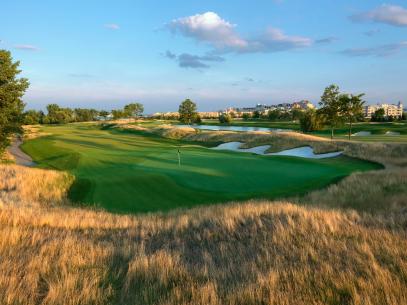
Like No. 177 Bayonne Golf Club to the south, Liberty National Golf Club was a reclamation project, a super-expensive Superfund clean-up of New York harbor, replacing a putrid assortment of oil refineries and storage tanks with an intriguing combination of green grass and golden rough. By spreading 2 million cubic yards of fresh soil over the capped toxic wastes, architect Bob Cupp and pro-consultant Tom Kite started building something meant to be a major tournament venue. It has narrow bent-grass fairways, just 25 to 27 yards wide, and tiny, flawless bent-grass greens, averaging just 3,400 square feet. With several hundred mature hardwoods transplanted along the fairways, a couple of rock-lined streams edging greens and winding cart paths fashioned from brick, Liberty National looks like what Central Park might be if it were a golf course Liberty National sits just three miles southwest of the tip of Manhattan, so the views of the NYC skyline, and the Statue of Liberty, are tremendous.
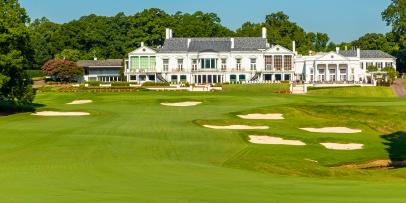

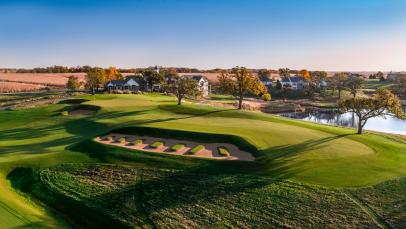
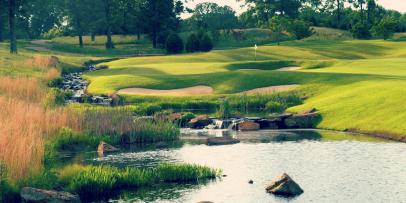
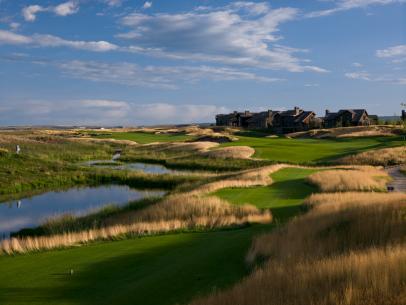
 - Jon Cavalier.jpeg.rend.hgtvcom.406.271.suffix/1573163057785.jpeg)
Built half a decade before the club’s other 18, No. 166 Cassique, The River Course at Kiawah Island Club features an exquisite river setting. The course flows gently through forest and along lagoons the first six holes, then becomes truly great from seven to nine, with two holes playing around big Bass Pond and the ninth running along the marshy edge of the Kiawah River. The back nine repeats the rhythm, with play again beginning in forest and along ponds before a dunesy stretch scattered with live oaks and vast expanses of sand. The River Course concludes appropriately with 17 and 18 along the tidal wetlands of the Kiawah River. There’s nothing particularly original in the architecture of The River Course, as Fazio has done variations of these holes before. It some ways, it’s The Greatest Hits of Tom Fazio.
• • •
Explore Golf Digest's recently relaunched Places to Play community, where you can add star ratings and reviews for all the courses you play. We've collected tens of thousands of reviews from our course-ranking panelists to deliver a premium experience, which includes experts' opinions, bonus course photography and videos, plus much more. Check it out here!

